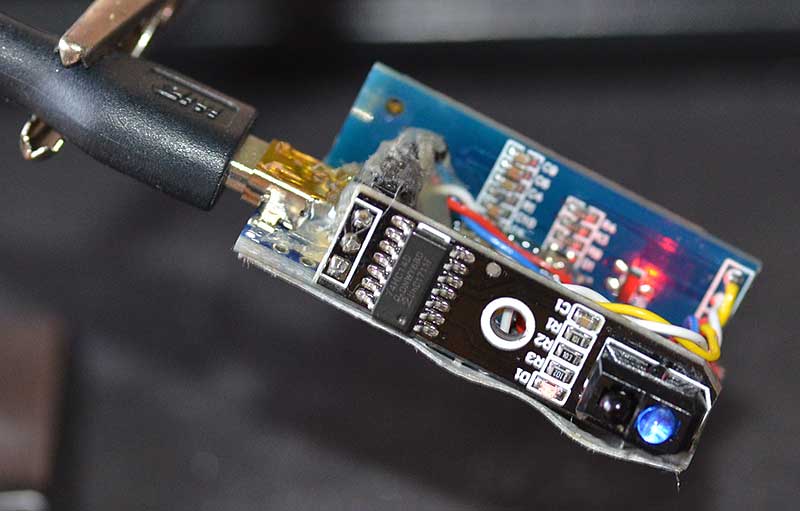
How to Test a Tachometer with a Multimeter: Step-by-Step Guide
Share
Tachometers are essential devices commonly used in various applications to measure rotational speed. For those who work with automotive electronics or any equipment relying on tachometers, knowing how to test a tachometer with a multimeter is crucial. This guide aims to provide detailed instructions and insights into the testing process, ensuring that technicians and enthusiasts alike can accurately assess the functionality of these instruments.
Before diving into the testing procedures, it's essential to understand the basic functions of a tachometer. These devices provide real-time information about engine RPMs, allowing users to monitor performance and make timely adjustments. A multimeter, on the other hand, is a versatile instrument that measures voltage, current, resistance, and other electrical properties. By combining these two tools, you can effectively determine the operational status of a tachometer.

Understanding the Basics of Tachometers
Before jumping into the technical details, lets explore why a tachometer might fail or give incorrect readings. Common issues can be attributed to:
- Wiring Problems: Loose connections or damaged wires can disrupt the signal sent to the tachometer.
- Faulty Instruments: The tachometer itself might be malfunctioning due to internal electronic faults.
- Interference: External electrical noise can affect the accuracy of readings.
Properly testing a tachometer involves more than just checking its reading. You must inspect connections, verify the wiring's integrity, and ensure there is no electromagnetic interference affecting performance.
Required Tools for Testing
To test a tachometer effectively, you will need:
- A reliable multimeter
- Wiring diagrams for the specific vehicle or equipment
- Screwdrivers and other basic hand tools
- Safety glasses and gloves
These tools will help you ensure safety and efficiency while working on tachometer testing.
Steps to Test a Tachometer with a Multimeter
Here is a straightforward guide to how to test a tachometer with a multimeter:
Step 1: Preparation
Begin by ensuring your vehicle or equipment is turned off. Put on your safety gear, and then disconnect the battery to avoid electric shock.
Step 2: Identify the Tachometer Wiring
Consult the wiring diagram pertinent to your vehicle or equipment to locate the tachometer subsystem. Typically, there will be a signal wire, a ground wire, and a power supply wire.
Step 3: Connect the Multimeter
Set your multimeter to the appropriate setting, likely 'DC Volts' or 'AC Volts' depending on the tachometer type. Connect the positive lead to the tachometer signal wire and the negative lead to the ground wire.
Step 4: Start the Engine
With everything securely connected, reattach the battery and start the engine. Observe the multimeter display for voltage readings.
Step 5: Analyze Readings
The readings on the multimeter will indicate if the tachometer is functioning. For instance, if you see fluctuations as the engine RPM changes, it suggests that the tachometer works correctly. If the reading is stable or absent, further investigation is required.
Step 6: Troubleshooting
If you suspect issues, check the wiring for continuity using the resistance function on your multimeter. Look for breaks or shorts that could impair signal transmission.
Common Issues and Their Solutions
Knowing how to test a tachometer with a multimeter is crucial, but understanding common issues can further assist in resolving problems:
- Erratic Readings: This could indicate a loose connection, a faulty ground, or interference from other electrical components.
- No Reading: Ensure that the tachometer is correctly powered and that the signal wire is connected.
- Consistently High or Low Readings: This could signal a malfunctioning tachometer or a problem within the engine.
When to Seek Professional Help
While many tachometer issues can be resolved with a multimeter, some intricate problems may require a professional technician. If you've exhausted all troubleshooting steps without success, consider consulting a specialist to avoid further damage to your equipment.
Additional Resources
Understanding tachometers and their functionalities can enhance your overall knowledge in automotive electronics. For further reading and information, check out:
Additionally, make sure to check other relevant topics such as What Do Tachometers Tell You? to enhance your expertise.

FAQs
- What is the significance of tachometers?
- Can a malfunctioning tachometer damage the engine?
- Is it safe to test a tachometer with a multimeter?
Tachometers provide crucial information regarding engine performance and RPM. This data helps in optimizing vehicle operation.
While a faulty tachometer won't directly damage the engine, it can lead to improper RPM readings, resulting in performance issues.
Yes, as long as you take the necessary safety precautions and ensure that the engine is off during wiring checks.
Being able to diagnose and test your tachometer with a multimeter is an essential skill for any tech professional or enthusiast. With the steps outlined above, you can ensure that your tachometer is functioning correctly and contributing valuable data to your engine management efforts.
If youre interested in learning more about advanced testing and inspection methods in aviation contexts, consider reading about the role of AI in paint inspection.
